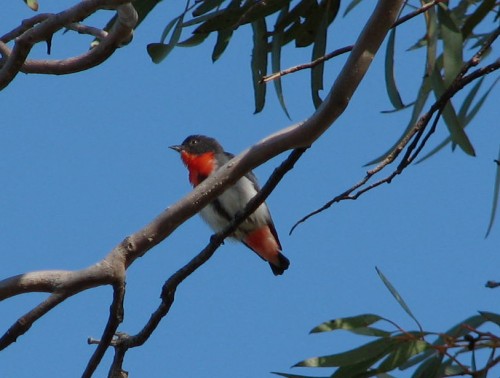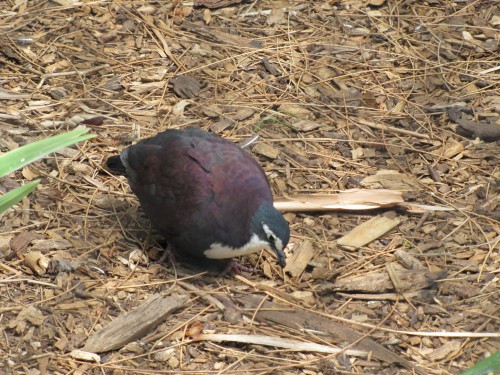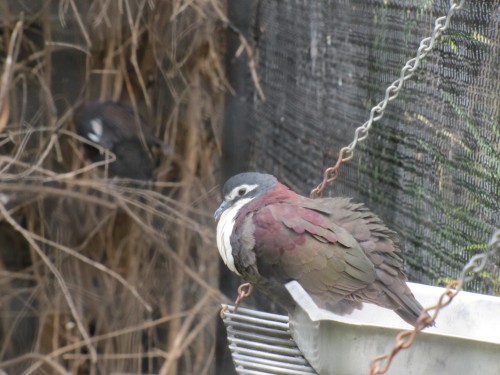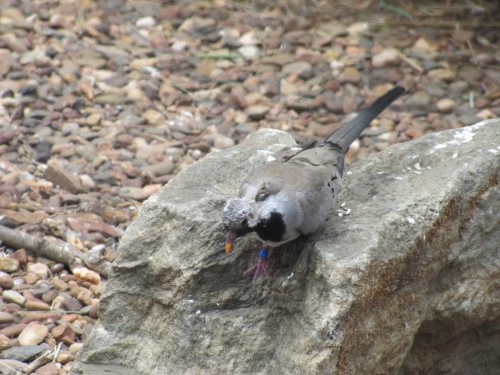Peaceful Doves in my garden
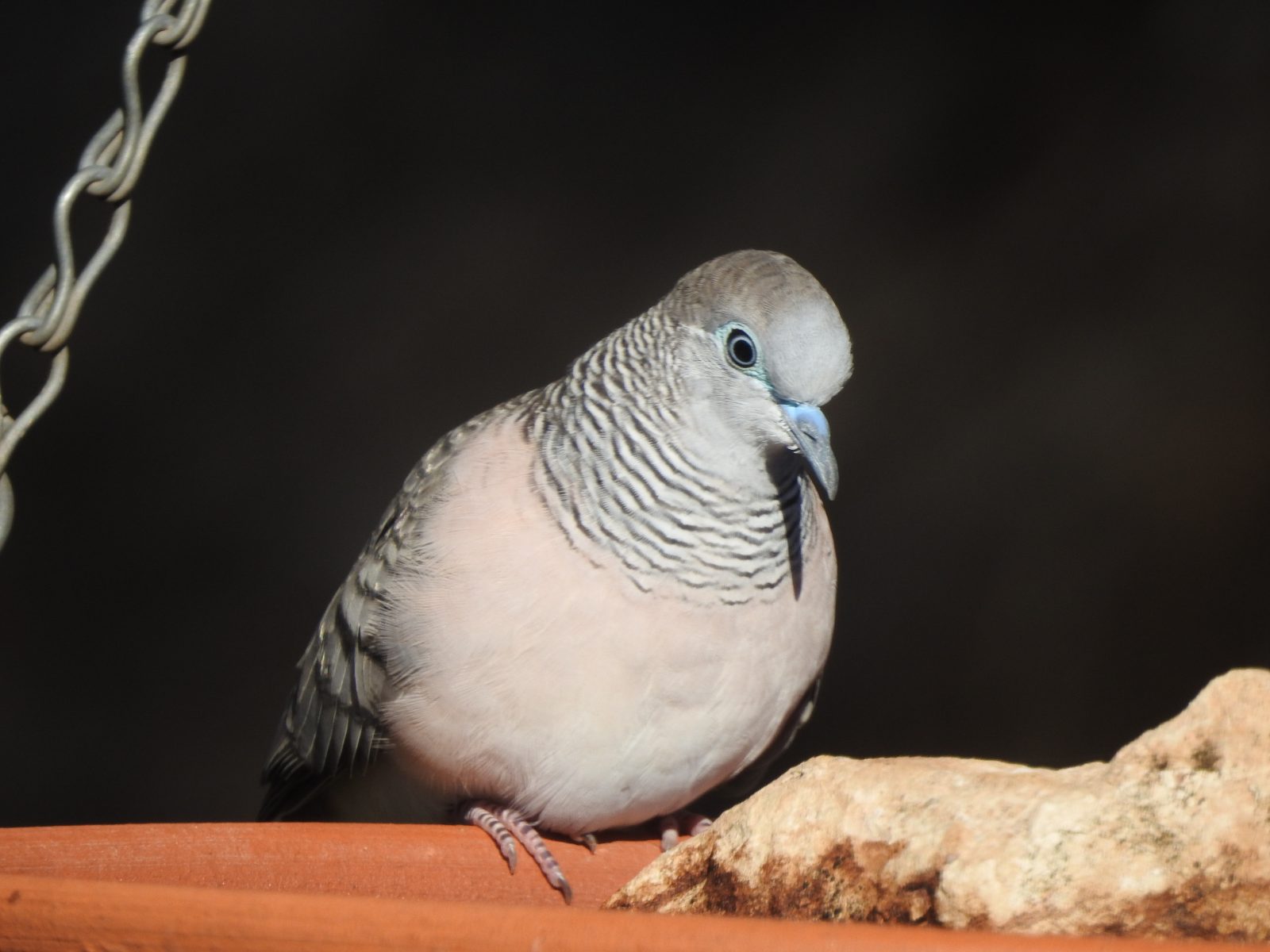
One bird species that I love seeing and hearing in my garden here in Murray Bridge, South Australia, is the Peaceful Dove as shown in today’s photos. I live on the western edge of the rural city of Murray Bridge on a five-acre (two-hectare) block of land.
As well as a large variety of Australian native plants and trees, I have a small orchard and some remnant mallee scrub. My property adjoins several other mallee scrub areas, including Kinchina Conservation Park about a kilometre to the west.
Because there is so much native vegetation remaining in this area, the bird life can be prolific. I have lived here for over 35 years and have kept monthly lists of birds observed over that period, except for a few periods when I was away. This includes many holidays interstate and several trips overseas.
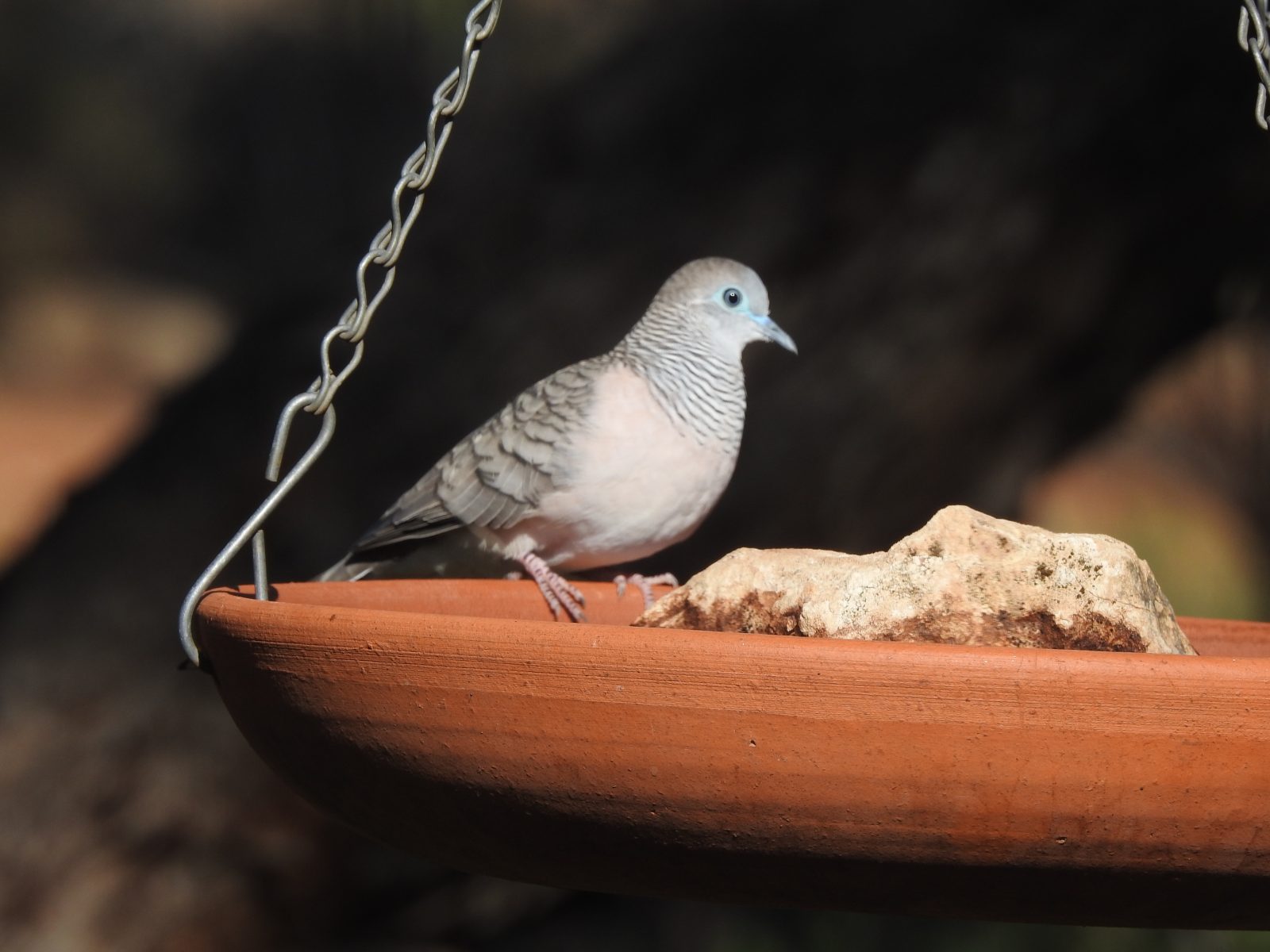
Doves and Pigeons
The most common species in this family of birds is the Crested Pigeon. They are a resident breeding species, meaning that they are seen every day and have been recorded breeding on my land.
For many years I have recorded Spotted Turtledoves (Spotted Doves) almost every day as well, but in the last few years, I have only seen this species here occasionally. The same applies the Rock Doves (Feral Pigeons) which are now only recorded occasionally. One other species, the Common Bronzewing, has only been sighted here on a handful of occasions.
In the first 20 years living here I only occasionally sighted Peaceful Doves. Then an individual would sometimes move down the hills to the west and visit my garden for an hour or two. On checking my database of records, I started seeing them regularly from late 2009. Over the next decade, they have become resident and I hear and see one or more every day.
At first I only saw one of two until more recently when I have recorded up to six in close proximity to each other. Only a few days ago I looked out the window to see four of them sunning themselves all within a square metre. It has become one of my favourite birds and I feel so privileged to see and hear them regularly here at home.
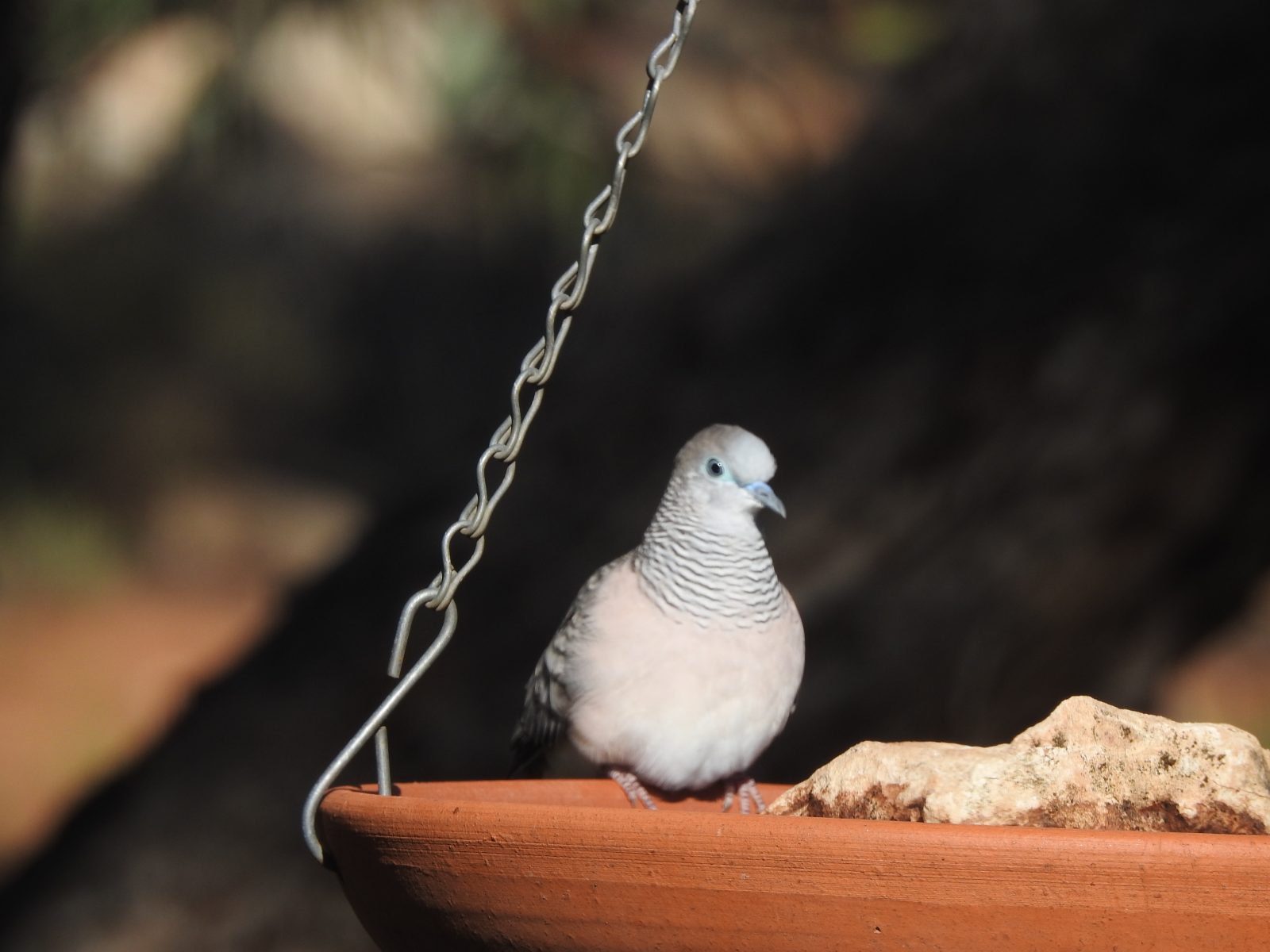
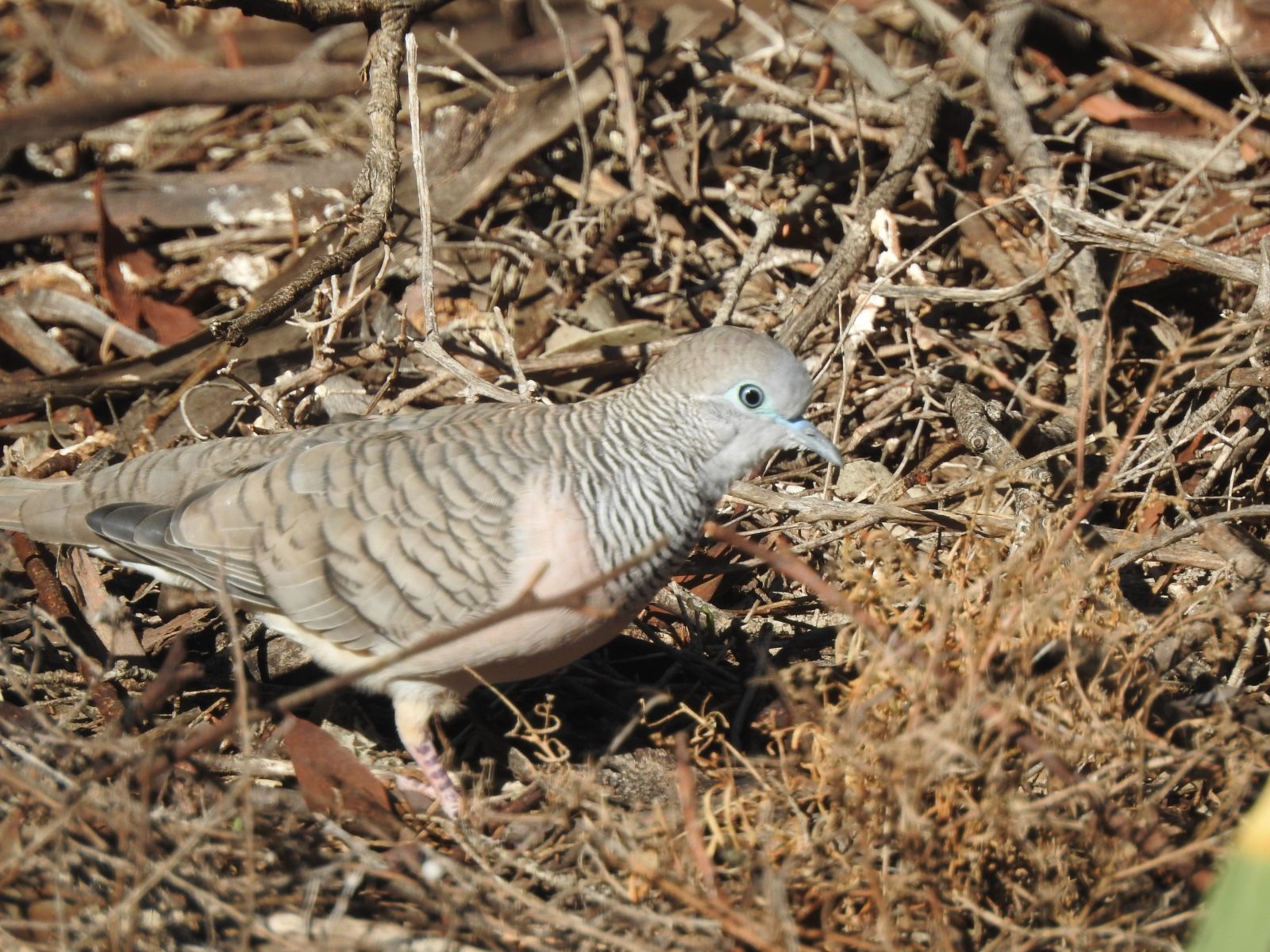
A Mistletoebird pays a quick visit
Yesterday my wife and I were taking a short break from the jobs we had been doing. Sitting on our back veranda we were enjoying the lovely sunny spring weather we have had this week. It was afternoon tea time and we were enjoying a well deserved cup of tea. The back veranda has been a bit of a mess over the winter months and the weather has been too cold to spend too much time cleaning it up. Now that the spring weather is here we had a renewed enthusiasm for being outside.
While we sat there we enjoyed the constant parade of birds hopping around in the garden nearby. Many others were calling and we enjoy trying to identify them by call alone, a good way of honing one’s identification skills. Our resident Superb Fairy-wrens entertain us every day, as do the Mallee Ringneck parrots, the Eastern Rosellas and the Galahs. We can’t work out if the Galahs are actually nesting or not. The Spotted Turtledoves often join in the chorus and in recent days we have had the delight of Peaceful Doves also hanging around near the house.
As we sat there we were delighted to have a female Mistletoebird fly in and alight on a bush in full view just three metres from us. We were able to see the soft, dull grey colours of the feathers on her back, a stark contrast with the blue-black feathers of the male (see photo above). I didn’t have the camera handy, and the bird flew off after less than a minute, so I have shared a photo of the male taken some years ago. I do have one photo of the female, but unfortunately it is not in focus. Sigh.
I cannot categorically say that this is a resident species in our garden and on our 5 acre property, but it is certainly a regular visitor. I hear its call almost every week. Many years ago this was the first species to nest in one of the trees we planted after moving here. There may have been other species before it, but this was the first one we positively recorded doing this. The nest is a delicate pear-shaped container with a small entrance near the top. It is made primarily from spiders’ webs, small leaves, lichen and other soft materials, and hangs from small twigs or leaves. They are just coming into their breeding season, so I need to keep an eye open for a nest. This species is found throughout mainland Australia except in the driest regions. It is not present in Tasmania.
Further reading:
- Beautiful Mistletoebird
- Great Birding Moments #3
- If you click on the name of any of the bird species mentioned in the text above, you can go to other articles about that species.
White-breasted Ground Dove, Adelaide Zoo
Today I feature another species I have not yet seen in its natural habitat, the White-breasted Ground Dove. Today’s photos were again taken in the Adelaide Zoo, South Australia. This zoo has an excellent bird collection on display.
As this species is found in Papua New Guinea, a country I have yet to visit, it’s not surprising that I have not seen this bird in the wild. Visiting a zoo is not quite the same, but is a good way of seeing birds I may not otherwise get to see.
As the name suggests the White-breasted Ground Dove is a species that spends a lot of time feeding while on the ground. It eats seeds, berries and insects and can be found in the dense undergrowth of the rainforest. Sounds like it might be a bird hard to find in its natural habitat.
I’m not absolutely certain, but I think that the photo above shows a male, while the one below is of a female which has duller colours than the male.
Namaqua Dove, Adelaide Zoo
The Namaqua Dove shown in today’s photo was taken in an aviary in the Adelaide Zoo, South Australia.
The natural habitat of this species is southern Africa. It can be found in open woodlands, grassy plains and scrubs, mostly feeding on the ground. Like many doves and pigeons, it makes a flimsy nest and usually lays two eggs.
Although they are found in Ethiopia, I did not get a chance to see this species on my visit there a few years ago.
Rose-crowned Fruit-dove
On a recent visit to Adelaide Zoo, I focussed particularly on bird species. This zoo has an excellent collection of Australian birds plus a few exotics.
I managed this one photo of a Rose-crowned Fruit-dove, a species I have yet to see in the natural state. Sorry that the photo is slightly blurred – it was taken through the wire netting of the aviary.
Australia has six species in the family known as fruit-doves. Their diet is predominantly fruit, of course. This colourful species can be found in the northern extremes of Western Australia and the Northern Territory and from Cape York in Queensland down the eastern coast to about the Sydney region, sometimes even further south.
